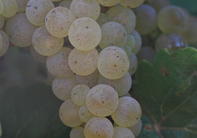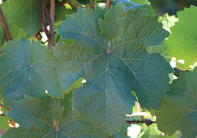Description
Weisser Riesling is a white wine variety used to produce sparkling wines as well as light fruity dry, semi-sweet and sweet still wines. It is seen as the king of German vineyards.
DNA analysis has identified Gouais blanc as one of the parents of Weisser Riesling, but the identity of the other parent is still uncertain, with speculations that it might be a wild grape variety, Traminer, or a cross between a wild variety and Traminer.
Origins
Weisser Riesling has been cultivated in Europe since the Middle Ages and seems to have originated in the Rhine Valley region of Germany.
It achieved great success in the 19th and 20th Century when prices for this wine were comparable to the greatest of Burgundy and Bordeaux. Market confusion, however, developed when producers adopted the same name for other varieties to ride on Weisser Riesling’s marketing success, as also happened in South Africa.
Other Names
Synonyms include: Rhine Riesling, Riesling, Petit Riesling and Rhine-Riesling.Production in South Africa
The first Weisser Riesling clones were brought to South Africa in the 1960s and released for commercial production around the mid-1970s. One of the initial obstacles facing the variety was market confusion between it and Cape Riesling, which in fact is no Riesling at all but Crouchen.
To address this confusion, legislation was amended in 2010 so that the name Riesling may only refer to wine produced from Weisser Riesling. The main producers of Weisser Riesling in South Africa, have since formed the Just Riesling Association to improve awareness and interest of the variety.
While Weisser Riesling vines is found in all the production areas of the country, the area under production is extremely small. Most of the vineyards are found in Stellenbosch, followed the Cape South Coast and Paarl. The variety thrives under cool climatic conditions.
Growth and Ripening
A moderate grower, with a medium yield potential ranging between 10 t/ha to 12 t/ha. Grapes ripen early season, from the end of February to the start of March.
Berries and Leaves
Berries are round, small to medium-sized and have a bright green to yellow green colour. The skins are thin and tough, while the flesh is soft and juicy. The leaves are round, medium-sized, dark green and have five lobes.

